

















































































































































































































































Welcome to Hear The Roar!! In this issue, we’re discovering the world’s precious primates. Find out what makes our closes relatives so special.

“To start, a riddle: You play a critical role in the forest. You help regenerate trees, vital to help fight climate change – a big problem affecting the world. Although you can be aggressive if attacked, you’re usually friendly and relaxed, especially when spending time with your family, in your wild, natural forest habitat. Who are you?
A glorious gorilla of course!
“We’ve encountered wild gorillas on several occasions and, after giving them space and remaining relaxed, they calmly carried on through the forest. We can all ‘live and let our precious primates live’! Together we can help protect the wild and create change to solve the problems caused by climate change.”
Donald Mbohli, Guardians of Dja Programme



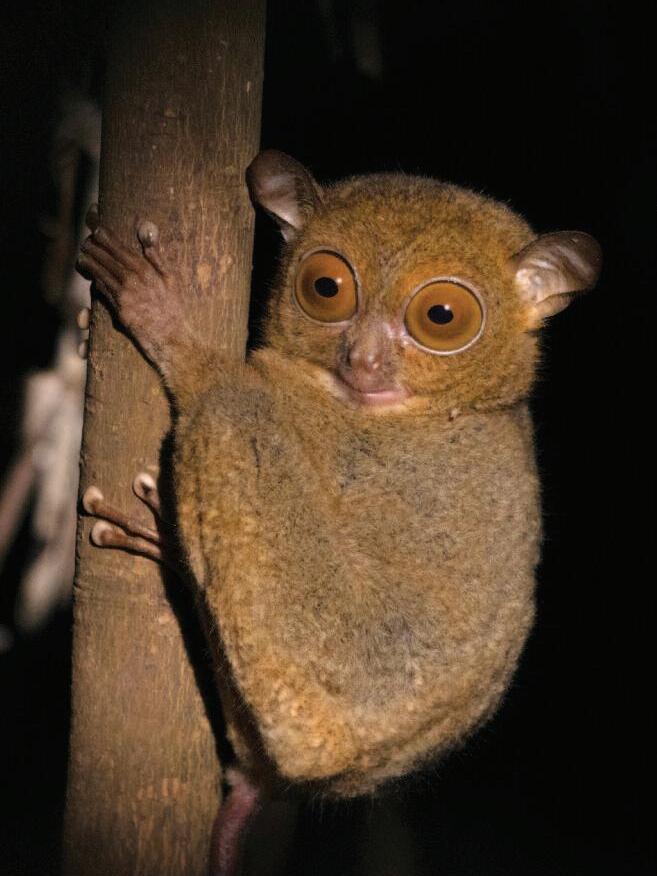
l One of the world’s smallest primates, g g as little as 80g.

l Found in the rainforests and shrublands of Southeast Asia.
l The only 100% carnivorous primate – mostly eating insects, but also small lizards and birds.
l Thanks to a specially adapted backbone, can turn their heads 180°.
l Huge eyes help them see in the dark. Their eyes are larger than their brain!
l Can travel over five metres in a single leap If we could leap this well, we could jump over five double-decker buses.
l All 14 species of tarsier are threatened with extinction.

Laura, Born Free’s Head of Education, was lucky enough to see tarsiers in Indonesia: “We got up very early, walking into the forest to watch tarsiers return to their nests at dawn. Watching them jump past us from tree to tree was life changing. Something I will never forget. ”

There are hundreds of different primate species, including lemurs, tarsiers, bush babies, lorises, monkeys and apes. They all look different, but all species have things in common: Large complex brains, forward facing eyes with good vision and opposable thumbs for gripping with their hands (or even their feet).

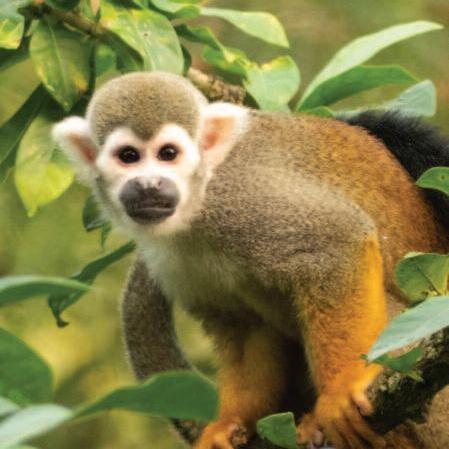
Can you think of any primates? One species might be closer than you think
Can you think of any primates? One species might be closer than you think






Found with a serious leg injury, Princess was rescued by our friends at Lilongwe Wildlife Centre in Malawi. Her injury means she’ll always walk with a slight limp but, after six months of dedicated care, she was ready to be released back to the wild.

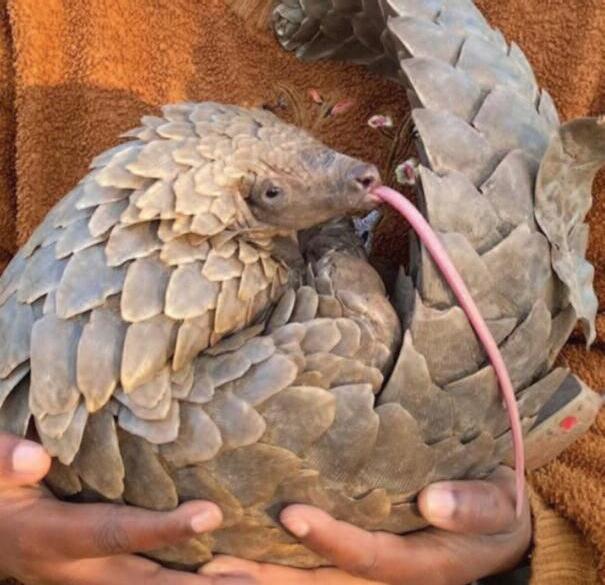
Did you catch the latest Wallace and Gromit film? Villainous penguin Feathers McGraw escaped from ‘prison’ (a zoo!) in the latest film: Vengeance Most Fowl. Thank you to Aardman Animation for highlighting the plight of animals confined in zoos across the UK.

Dolphins and whales swim hundreds of miles a day in the open ocean, so don’t cope well living in small, chlorinated tanks. This year Born Free is calling for anyone travelling abroad to not visit attractions keeping these amazing animals captive. It’s time to go tank-free and watch them in the wild inste d!

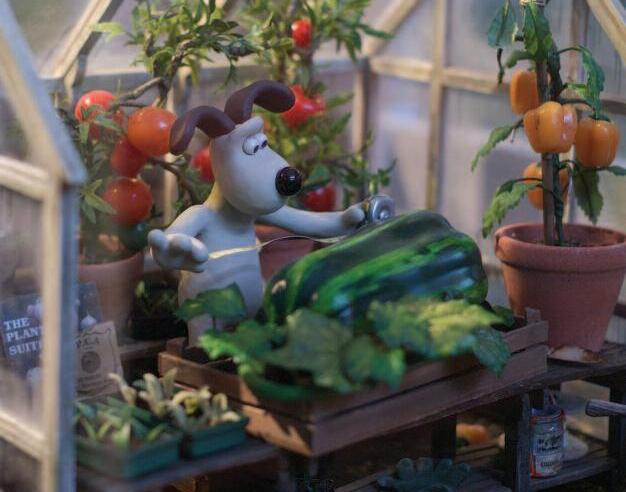


Ivory isn’t just poached from elephants The teeth and tusks from hippos, walruses, narwhal, orca and sperm whales are also sought-after by poachers After decades of campaigning by Born Free, it’s now illegal in the UK to trade ivory from these species. What a win for wildlife!


You might think pigeons are dull, but there are many colourful species found around the world!
The (long extinct) dodo’ s closest living relative is the beautifully feathered Nicobar pigeon.
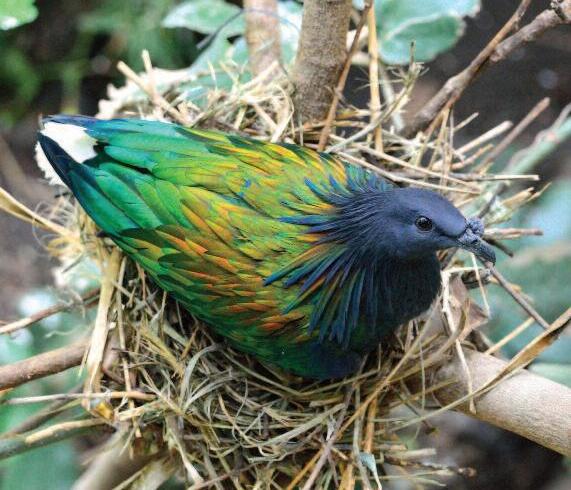

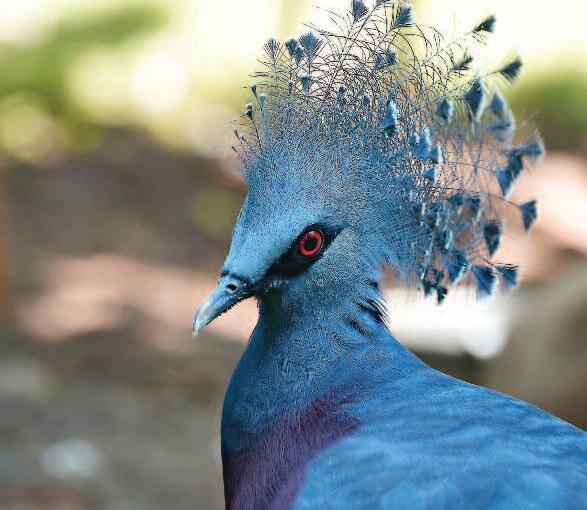

Born Free’s Rescue and Care Coordinator, Tarnya, tells us about Wotsit, a pigeon who arrived into her care in a rather interesting way!
“I’ve cared for many rescued pigeons over the years Wotsit, a young feral pigeon was discovered outside an office block in London His rescuer saw him huddled on the ground in the same spot all day, and knew he needed help

To safely carry him, the man popped into a local shop and bought a gift bag He then carefully placed Wotsit inside (please don’t try this at home!) The squeaking gift bag got quite a few strange looks as the pair travelled across London
“After a period of care with me, Wotsit was released back into the wild, alongside a flock of wild feral pigeons.”
It can be tricky to know what to do when you find wildlife in need. It’s always best to contact your local wildlife rescue for advice. They can explain what to do.
Primates have the power to plant trees, create forests and keep habitats healthy.


As primates move through the forest, they will, naturally, need to go to the toilet. Thanks to their diet (as well as being a bit smelly) their poo is full of seeds. As they travel, more and more seeds are spread in their poo in new areas. These then sprout and grow into new plants.
Sadly, it’s thought around 50% of all primate species are threatened with extinction.
But we can all help! Our phones, tablets and other electronics contain precious metals. If it’s time for an upgrade, make sure you recycle old devices, rather than throwing them away (even better if you fix them when they break)! Metals used in electronics are often found by mining inside forests, leading to deforestation, and the destruction of forests that are home to many species of primates.
There are over 500 species of primates, of all shapes and sizes. Here are some of the stranger species who spread seeds around their forest home.
Found: Island of Borneo.
Endangered
The proboscis monkey has a very distinctive appearance Males have long noses, hanging down over their mouths Scientists think a larger nose helps them make louder calls, which makes them more attractive to females
Found: Forests of west Africa.
Vulnerable
Mandrills are the world's most colourful monkeys High ranking males have bright red, blue and purple bottoms to show they’re in charge, to go with their colourful faces and bushy manes


Found: Forests of central China
Endangered
These blue-faced monkeys can withstand cold temperatures better than any other living primate. Found in cold, mountain forests, family groups huddle together for warmth during freezing winter nights.


It may seem fun, and primates might look cute and friendly. But… Primates are highly intelligent and emotional wild animals, who struggle when forced to live in our homes. They have specialised diets and need to explore outdoors in the sunlight,
socialising with other members of their species. Even primates raised in captivity are not domesticated like cats and dogs (pets who have lived alongside humans for many thousands of years). Primates are wild animals.
Primates belong in the wild with their own families, not in our homes.

It’s currently legal to keep primates as pets in the UK. But soon, people in England will need a special licence to keep a pet primate. But should they be banned altogether? We think so.

• Some primates sold as pets have been taken from the wild. Demand for pets is threatening some wild species with extinction, including chimps.
• To make primates seem ‘tame’, breeders take babies away from their mums too early, causing stress for both mother and baby.
• Primates can be dangerous! Even small monkeys could seriously hur t someone, by biting or scratching.
Primates can behave in ways we think are cute, but actually mean they’re feeling stressed or anxious For example, when people think a monkey is ’smiling’, they’re actually baring their teeth in fear. Misunderstanding primate body language and how they’re feeling can lead to even more stress



“Any home can become a cage, and I wanted to make people ask themselves; would they be happy if it were me locked up in a zoo?”.



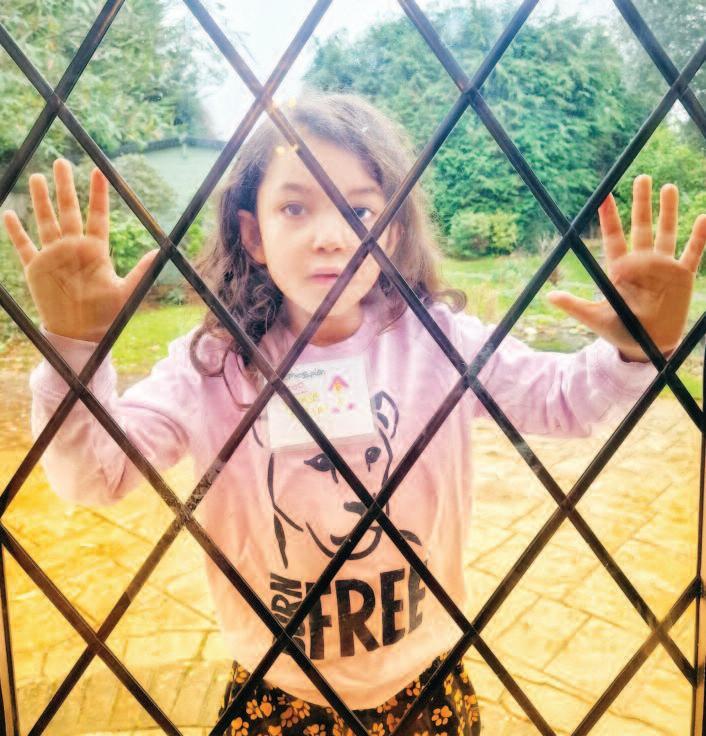
Inspired by Born Free’s short film The Human Habitat, which shines a spotlight on the suffering of big cats in zoos, Arabella decided to recreate the message at home.
Have you held a fundraiser or helped raise awareness about wildlife in need? Tell us what you or your school have been up to for wildlife. Send your stories and pictures to education@bornfree.org.uk (please ask your parent, guardian or teacher before getting in touch). For fundraising ideas visit: www.bornfree.org.uk/education-fundraising
“We saw a video of a pangolin having a mud bath and it was so cute! Then we found out people are killing them, so wanted our friends to help because we like them. We have adopted Born Free’s Pangolin Family too. ”




Brothers Kit and Archie fell in love with pangolins after seeing an adorable clip and knew they had to help Not only did they become pangolin adopters, they encouraged friends and families to adopt too*. They even created an ‘adopt a pangolin’ poster for World Conservation Day.
*Find out how your class can adopt a pangolin, gorilla or even a tiger on the back of this magazine.

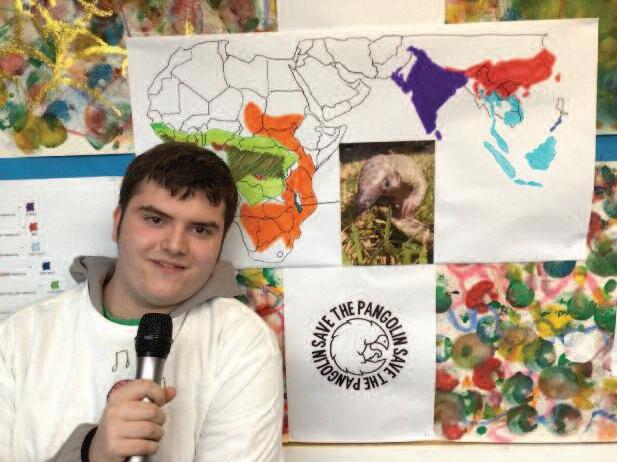
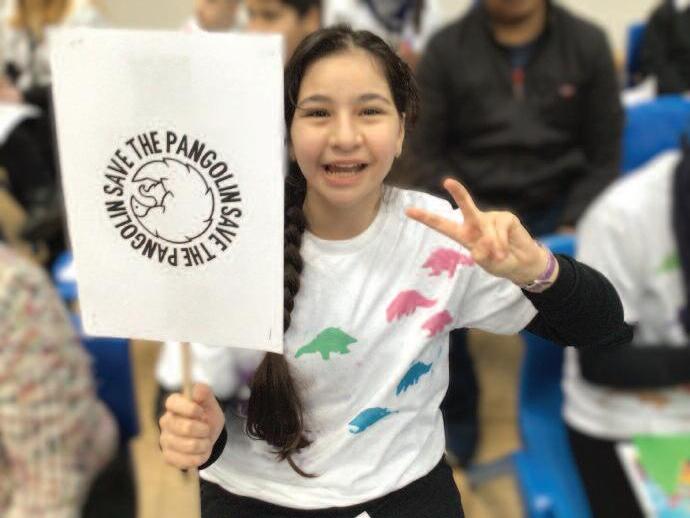

Tyra loves tigers! Having already adopted Gopal the tiger, she asked a local ar tist to spray-paint a mural of Gopal on her bedroom wall. We think it looks grrr-eat!
Pupils at Oak Lodge and Windmill Schools celebrated all things pangolin during their Living With Pangolins’ week They created pangolin ar twork and sculptures, made pangolin biscuits and performed a play about a rescued pangolin’s journey to the wild! What amazing work guys!
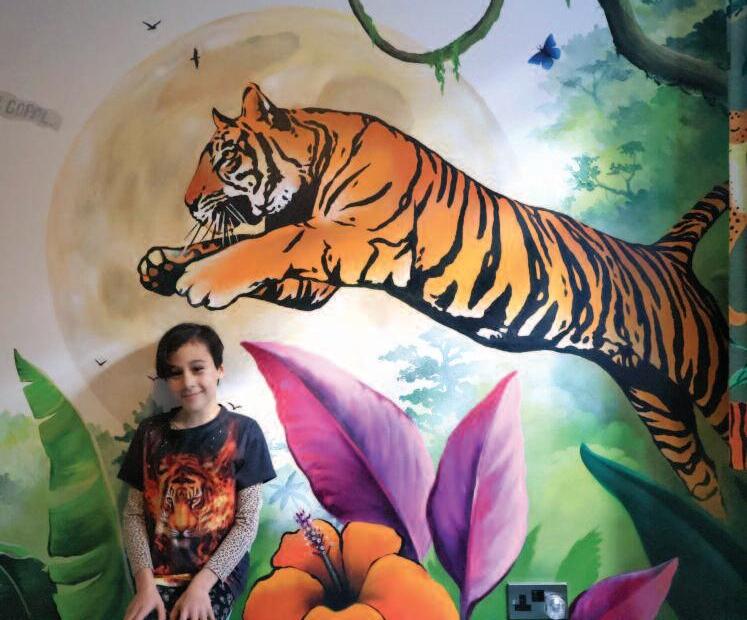

“Tigers are majestic, proud, beautiful and fierce. No one should be able to kill a tiger. Tigers are amazing creatures. Help save the tigers!”
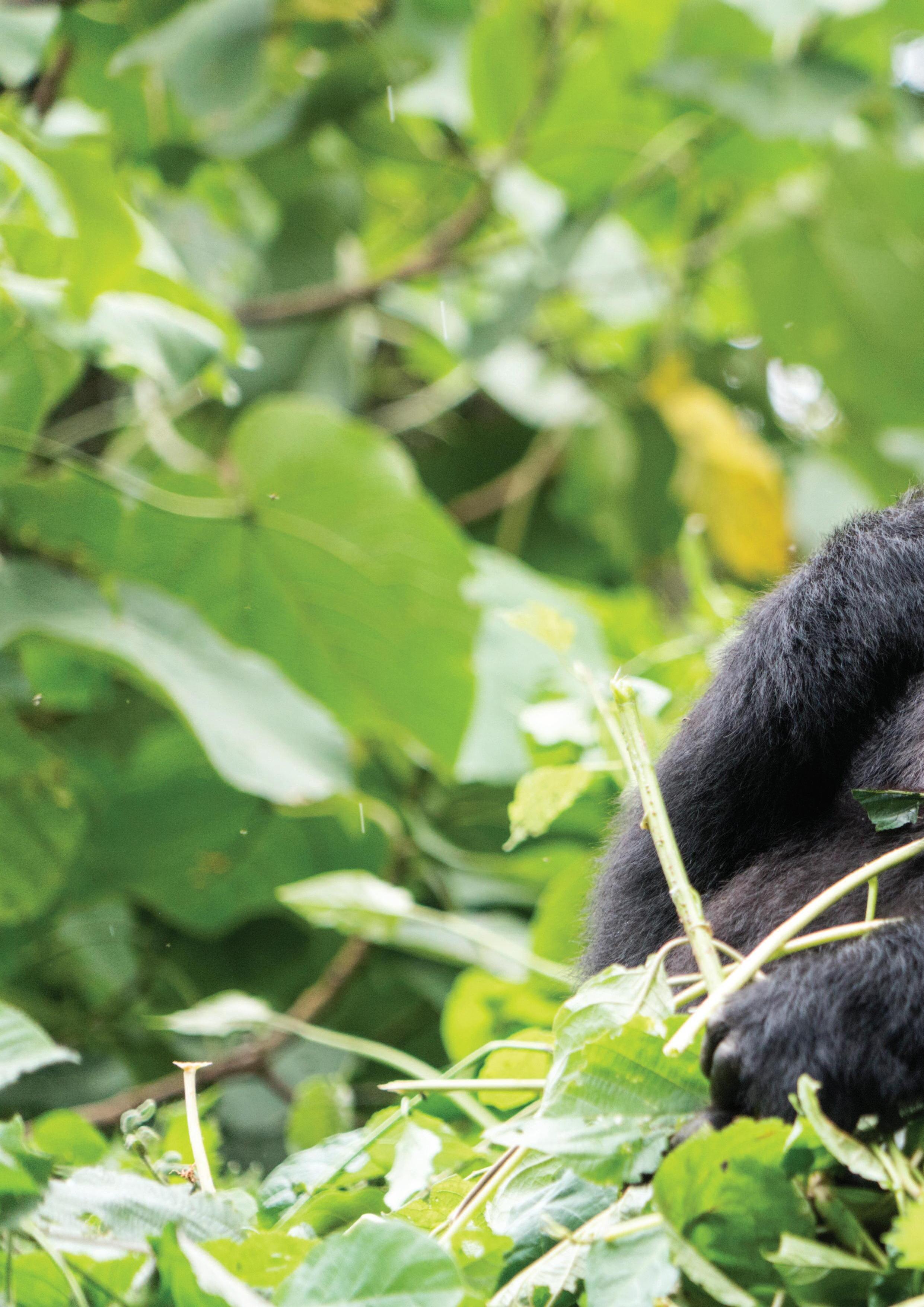

Gorillas are the biggest primate of all, weighing over 200kg (imagine 200 bags of sugar). They live in central Africa in family groups known as troops. Gorillas are the biggest primate of all, weighing over 200kg (imagine 200 bags of sugar). They live in central Africa in family groups known as troops.
Gorillas are incredibly intelligent, capable of laughing and showing emotions, such as joy and sadness.
Unlike humans, gorillas move on all fours. Strangely, their feet look similar to our hands, complete with an ‘opposable toe’ (similar to our thumb) to help them grip and climb trees.
When a male gorilla is around 14 years old, the hairs on his back turn silver and he becomes a ‘silverback’ . It is the silverback’s role to protect his group from intruders. He does this by beating his chest, charging and roaring, which can look very intimidating! But despite these impressive displays, gorillas are usually gentle and calm. Rather than grumpy, silverback males are caring and protective of their family.
Both the eastern and western gorilla are classified as Critically Endangered. They’re threatened by habitat loss, hunting and disease.


Bobo is a silverback western lowland gorilla. He was orphaned as a baby in 1999 because of the bushmeat trade. Thankfully, he was rescued and now lives at the Ape Action Africa sanctuary in Cameroon, along with other rescued gorillas.
Bobo is now in his mid-20s and is leader of his troop. Unusually, he lives with four other silverbacks. In the wild there would be only one in a group, but Bobo and the other males have learned how to live peacefully together, along with three females.
Born Free suppor ters help Bobo and his troop live happily in their forest enclosure, getting the care and nutrition they need.


Born Free works with local communities to protect wild chimps and gorillas in the Dja landscape (pronounced: jar), in Cameroon. Below are four camera-trap images taken in Dja, but can you identify the odd one out? Find out the answer later in the magazine.





WHAT DO TARSIERS LOVE TO EAT?
A) Fruit
B) Insects
C) Leaves
WHICH EXTINCT BIRD’S CLOSEST LIVING RELATIVE IS THE NICOBAR PIGEON?
A) Great Auk
B) Moa
C) Dodo
HOW DO CHIMPS WALK?
A) On their knuckles
B) Upright
C) They don’t walk, just swing in the trees 3
HOW DOES A MALE MANDRILL SHOW HIS DOMINANCE?
A) He has the loudest call
B) He has the longest hair
C) He has the brightest bottom!
WHAT ARE OLDER MALE GORILLAS KNOWN AS?
A) An omega
B) A silverback
C) Grumpy!


Born Free Junior Ambassador, Thea, explains how we can all learn about charismatic big cats whilst keeping them where they belong – in the wild!
“Big cats like tigers, lions and cheetahs are my favourite animals They’re so powerful, beautiful, and majestic. I love how each one has their own unique features, like the tiger’s stripes or the lion’s mane
“It’s really sad so many are kept in captivity Big cats belong in the wild and need space to roam and hunt, which they can’t do in cages Keeping them in circuses or zoos isn’t fair. Being in captivity causes them stress and can even make them sick or unhappy
“Instead of visiting zoos or circuses, young people like us can learn about their lives in the wild and help raise awareness to suppor t Born Free’s conservation effor ts –to protect their natural habitats and free them from captivity. It’s impor tant to protect these incredible animals and ensure they live in the wild, not locked up for our enter tainment Everyone deserves a chance to live freely!
WHAT ARE WALRUS TUSKS MADE OF?
A) Bone
B) Horn
C) Ivor y 6

o one can do everything, t everyone can do something d together we can make a ference for wildlife.

There are many ways to help protect wildlife. We speak to acclaimed wildlife artist and Born Free friend Gary Hodges, who helps protect wildlife with his incredible pencil drawings.

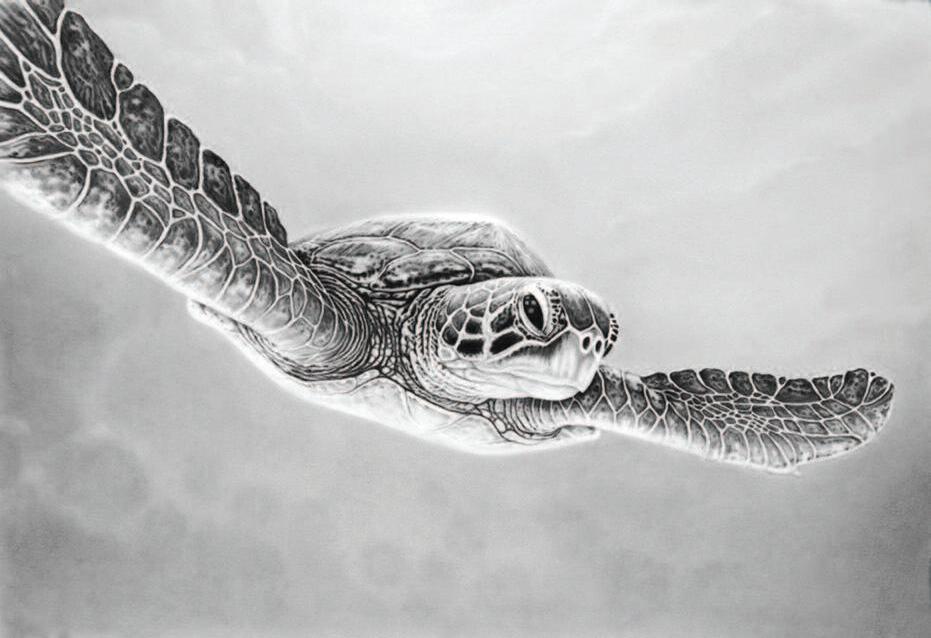







What inspires you?
I’ve always loved drawing. At school, ar t and calligraphy (decorative handwriting) were the main things I was good at At home, I'd spend ages happily drawing.
Why is wildlife important to you?
I love animals with a passion and, as they can't speak for themselves, I try to do my bit for them and give them a voice through my ar t. I can't imagine making a living drawing wildlife without giving back to help ensure their protection
Why do you love Born Free?
Born Free is filled with compassion and a clear aim to 'keep wildlife in the wild'. Animals do not belong in cages. Documentaries offer a much better understanding of what makes animals 'tick'
Any advice for budding wildlife artists? Draw, paint or sculpt what you love. If you enjoy creating wildlife ar t, practise and practise and look carefully to understand your subject’s shape and how the fur sits.
Do you have a favourite animal?
I love all wildlife but have a soft spot for elephants I've been for tunate to spend hundreds of hours observing elephants in Africa and Asia.
You recently saw some primates – lemurs –during your travels in Madagascar. Tell us about that experience.
They are so endearing and agile, springing from tree to tree There are over 110 species, living on that huge island and nowhere else
What are your dreams for the future?
I dream of a much kinder world for animals and humans.
Through his art, Gary has raised over £1.1 million for wildlife charities, including Born Free – now that’s heroic!










Howler monkeys are the loudest of all monkeys, so loud that they are featured in the Book of Guiness World Records! Their calls can be heard nearly 5km away

These impressive monkeys have canine teeth as long as a lions’, yet geladas actually spend most of their day, sat on their bottom, eating grass in the highlands of Ethiopia. They are the only species of grazing primate.

Primates bond by picking through their friends' fur, to remove dirt, bugs and lice, from hard-to-reach spots. This activity helps primates to socialise, stay clean, and, if they find a bug, provides a tasty snack!
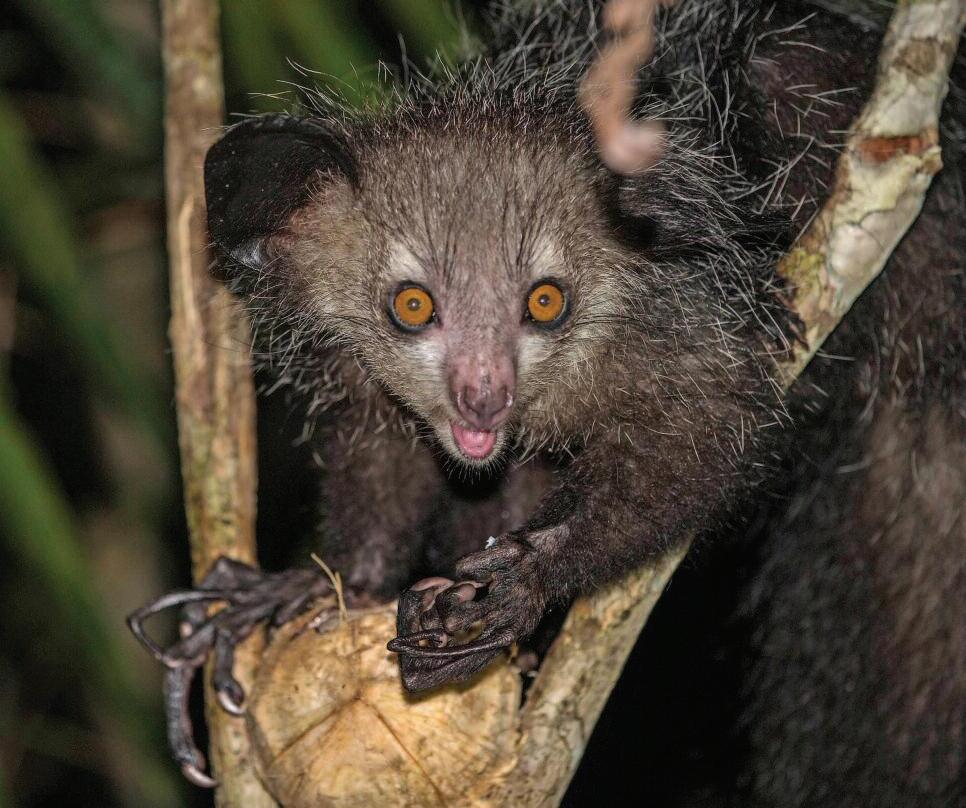
The aye-aye is a strange looking, noctur nal species of lemur. It’s so strange that scientists used to think they were a type of rodent They love insect lar vae, and use a long, spindly-looking middle finger to locate hollow areas where insects live.

Gorillas and chimps have a rather interesting way of walking on the ground. They balance on the knuckles! Why not have a go at knuckle walking yourself. Is it easy, or trickier than you thought? Now, have another go, but this time create your own ‘gorilla’ footprints.

Place your paper flat on the floor (make sure you’ve protected the floor first).
your shoes and socks. Dip your knuckles and feet into the paint –be careful where you put your feet! If you prefer, you can use a paintbrush to ensure your hands and


• Large pieces or rolls of paper
• Something to protect the floor
• Flat paint trays
• Paint and paintbrush
• Water and paper towels for c











